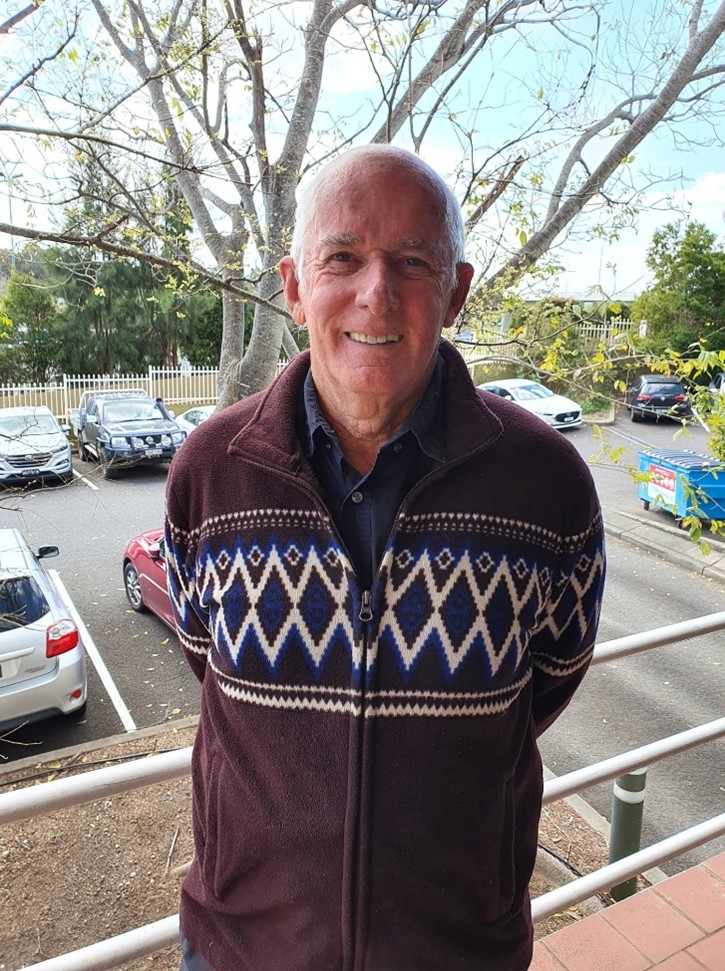Ken Barnard is a father of four who is surviving a parent’s worst fear of losing a child.
After a knock on their door in July 2014, Ken and his wife, Lynn, learnt that their youngest son Aaron had died by suicide.
Ken, now 70 years-old, says: “Our world collapsed.’’
Aaron was 32 years of age and had shown no signs that raised concerns for his wellbeing – to anyone.
Outgoing and loved within his large group of friends and close family unit, he had long term employment within a supportive workplace, “who were like family’’.
He loved music and played in a band. Aaron spent Sundays hanging out at his parent’s house making guitars, seemingly happy.
Ken says that Aaron taking his life was “inexplicable’’.
After losing Aaron, Ken reflects that, “there isn’t anything that gets you through it.’’
He says that he limped around, numbed by shock and intensely emotional for weeks and weeks and had no capacity to function.
Ken, who is pictured below, says that only his desperate want to ease the confusion, and understand what happened, gave him strength.
Suicide is the leading cause of death for Australians between the ages of 15 and 44, but not for one second did Ken think Aaron would be part of this statistic.
Their only possible clue was that Aaron would sometimes excuse himself from get-togethers; they now wonder if he had been withdrawing himself.
Adding to his confusion, Ken had been involved in the mental health sector for the five years before losing Aaron.
Ken, who had two mild episodes of depression himself, was involved with the Black Dog Institute.
He was also chairperson at Headspace in Campbelltown, an organisation that support young people manage their mental health, and is a member of Beautiful Minds, who provide support to people living with mental illness.

Despite Ken’s links, Aaron didn’t once approach his father for support or advice, which is something Ken cannot comprehend.
Both Ken and his wife talked about their loss with their separate GPs.
Ken’s doctor mapped out a mental health plan which included Ken beginning a mild antidepressant and 10 sessions to see a psychologist.
Ken says he didn’t find a connection with a psychologist straight away, while his wife Lynn did.
He persevered and eventually clicked with a psychologist, a young mum.
Over the sessions, she went through Cognitive Behaviour Therapy (CBT) and helped him to process what was going on in his mind. She encouraged him not to deny his feelings and helped to manage his loss.
Ken says that even though Lynn and he shared 45-years of a loving marriage, and they checked in on each other often, the experience of talking to a psychologist was essential to recover a sense of wellbeing.
It provided him with a therapy plan, taught him to be mindful, allowed him to openly address issues related to losing a child, and gave him comfort that he could go back if he ever felt the need to.
Ken is grateful he had wider supports and connections already in place, noting that they would not have been in a position to create a support network after losing Aaron.
Besides his wife, he had trusted friends that he saw regularly and who were willing sounding boards to his thoughts
The staff he had worked with in the mental health sector also provided valuable insights and support.
Ken admits that he lost supports too, people who didn’t know how to deal with his situation and he regrets that he didn’t have the emotional strength to manage this at the time.
As well as people, physical items have also been helpful supports: Ken carries Aaron’s handkerchief, keeps photos on his phone, held on to particular t-shirts and he wears Aaron’s watch. His older son made a book for the grandchildren so they can be connected to their uncle. In Aaron’s workplace his colleagues still dress up the mannequin head that Aaron used to decorate,
Family and friends celebrate Aaron’s life and he remains a part of their days.
They celebrate his birthday, but, to not traumatise themselves, they choose not to dwell on the time of losing him.
Ken’s family refer to random events that remind them of Aaron as “Aaron Attacks’’. The feeling can come out of nowhere and hit hard. Ken sees it as a release and a sign that his mind is not denying or avoiding the emotions. He thinks that pushing the pain away would be a harsher thing to do to themselves.
Since losing Aaron, Ken has learnt to live in the moment, which includes being mindful of his state of mind, remaining flexible for the sake of his own self-care, and learning his limitations. Though he is active in the community, advocating for change, he knows to step back when things are too overwhelming.
Ken reflects on how others interact more freely with them on mental health and loss, after they hear of Aaron’s passing.
The Barnards approach this graciously, welcoming people to contact them, saying: “We have endured far more than anybody’s story.’’
When fatigued by compassion, they have grown the skills to pull back when they need to.
Ken acknowledges that blame can be common in families that experience suicide, but praises his family’s ability to have made it through the rawest days by being mindful and flexible of each other’s experience of losing Aaron.
Ken’s advice to others is to accept the need to get help, “to not feel as though you can just tough it out.
“Because that is just not how it works. Some people may think they’ll ‘get over it.
“But, untreated, how long are you going to go saying, I’ll be fine, I’ll be fine.’’
Ken urges people to find someone in their life they can fully share how they are going, but also to speak to their GP.
“One of the biggest issues in men seeking help is that they fail to have a good connected relationship with a doctor.’’
Ken is sharing his story to add another voice to the greater story of mental health and suicide awareness, and, “to actually do something’’.
“How do you make a beach? A lot of grains of sand.’’
He’s enthusiastic about the new Emergency Department service, which uses trained peer support workers to support people presenting with mental health issues at Campbelltown Hospital.

But he wants to see more services available.
Though Aaron’s death came without warning, Ken recognises that there are many others who do show clues and there are ways to help them, now
“Suicide is measured in people’s lost lives; the reality of the statistics is that this is not a good time to not be doing something.’’
Ken Barnard’s story is a part of the Tackling the Challenge Project, a collection of local men’s stories, about resilience and recovery. If you have a story to share or would like to know more, contact Deborah Ferry on 4621 8704 or Deborah.Ferry@health.nsw.gov.au.
Scan the QR code to share your feedback about this story for a research project with Western Sydney University.
- If you need support, call the 24/7 telephone service at Lifeline 13 11 14 or the Mental Health Line 1800 011 511.




What a heartbreaking story told so beautifully. And so important to hear from others on how they deal with tragedy like this. Wishing the Barnards all the very best for the future
Thanks Deborah for sharing Kens/ story. It’s so sad but also inspiring, and I’m sure will help families going through similar trauma.
Also, a great prompt there for everyone to establish a good, comfortable relationship with a GP. 👌
Thanks to Ken and his family for sharing their strategies to help them move forward day by day, and into the future. Sending love and light to them all.
It is so sad for a person to feel so sad that they take their own life.
Men I feel are sometimes so stubborn that they won’t ask for help and think ..it will be ok I can do it and then one day they end it.
They feel going to a doctor is being weak but sometimes we all may need a helping hand, I know myself I went through a couple of bad patches and went on medication for a while and seemed counselling to make me understand what was going on. That helped..the message is get help.